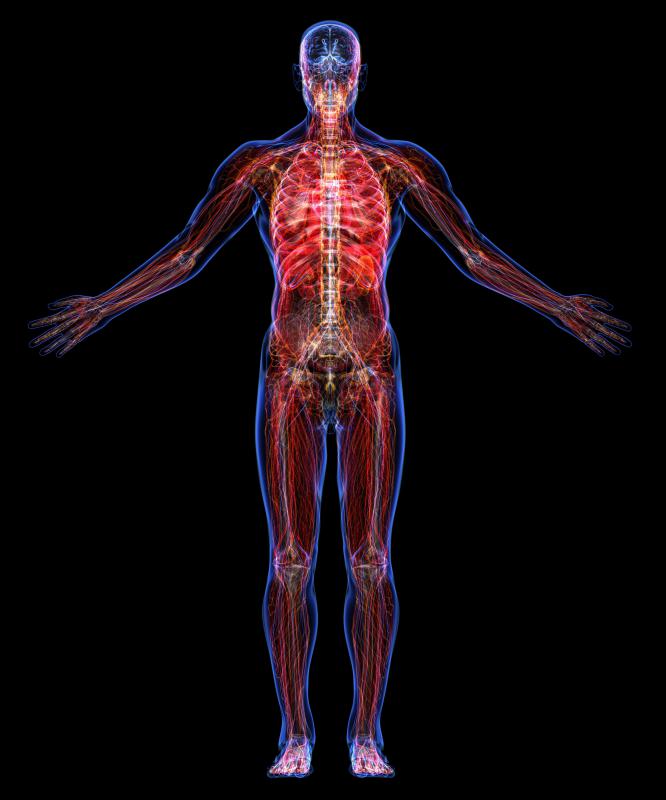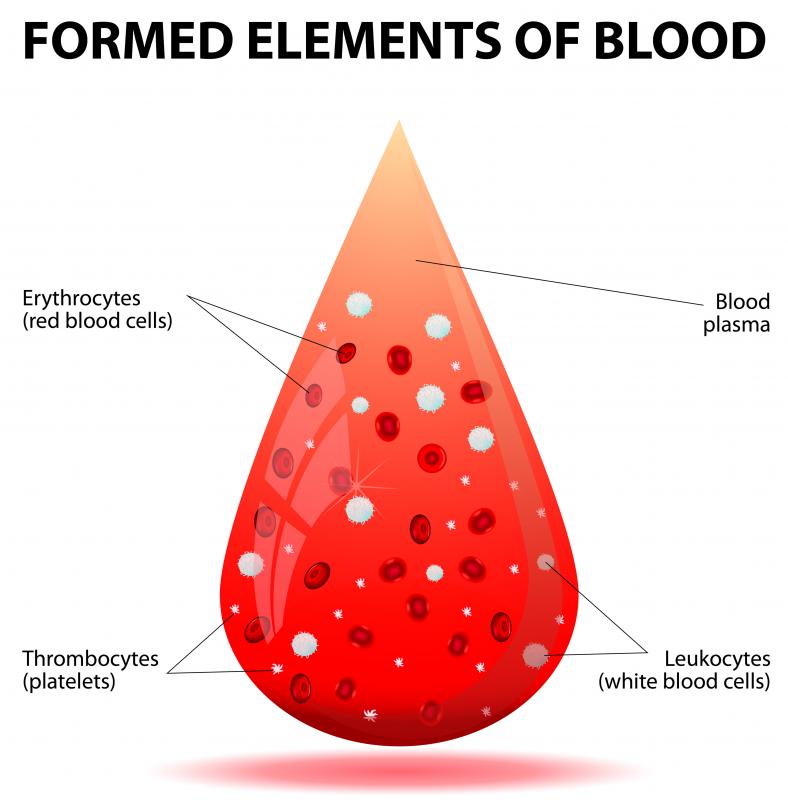At TheHealthBoard, we're committed to delivering accurate, trustworthy information. Our expert-authored content is rigorously fact-checked and sourced from credible authorities. Discover how we uphold the highest standards in providing you with reliable knowledge.
What Is the Connection between Blood and the Lymphatic System?
Blood and the lymphatic system are joined together by a system of capillaries. They are both types of circulatory systems, and although they work separately to perform different functions, both are vital to the function of the body and the immune system.
The cardiovascular system is the controlling system for the blood. It is responsible for carrying nutrients, oxygen, and chemicals through the body to the organs and tissue. As blood circulates, it goes to the kidneys to be filtered. The kidneys remove waste from the blood, but the lymphatic system also has a role in doing so.

Throughout the day, blood vessels and muscles produce waste that enters the vessels in the lymphatic system. Lymph nodes pull out the waste, and then the filtered fluids travel to the lymphatic ducts and are redistributed into the blood. The remaining fluid, called lymph, contains lymphocytes, which are a type of white blood cell that is important to the immune system.

A relation between the blood and the lymphatic system is found through the capillary system, as capillaries and other vessels are present in both systems. The location of blood vessels also signifies the location of lymphatic vessels. Unlike blood vessels, however, lymphatic vessels do not require a pumping action for circulation of fluids. They are capable of distributing fluid without any type of force.

These systems are also connected by the spleen, which is the largest organ of the lymphatic system and another cleaning mechanism for blood. It also has the ability to store excess blood, keeping the circulating volume normal while providing a backup supply to use when necessary. If the supply of blood starts to drop, the stored supply can help keep blood volumes normal.

The immune system is the primary source of protection for the body, and it connects the two system as well. Blood and lymphatic vessels carry leukocytes that the immune system uses to defend the body against an invasion by foreign antigens. Without a way to transport white blood cells, the body is defenseless.
The blood and the lymphatic system are linked not just in how they aid or fuel the immune system, but also in how they filter the important fluids the body needs to function properly. Without a joined filtering system, waste products and toxins might travel freely throughout the body, causing organ damage.
AS FEATURED ON:
AS FEATURED ON:

















Discuss this Article
Post your comments